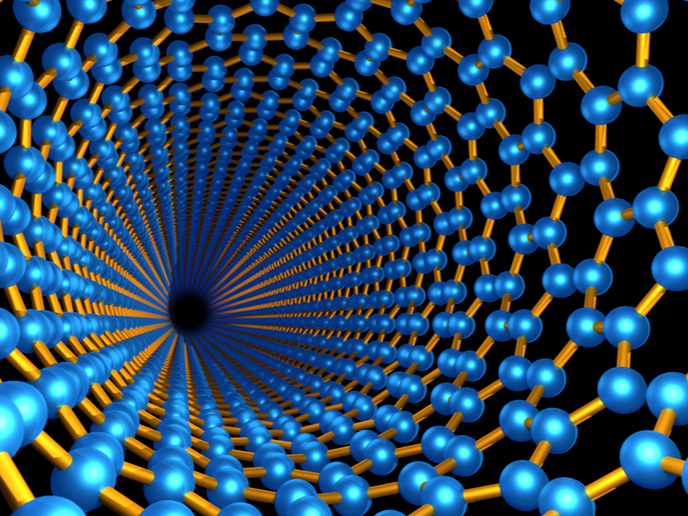Understanding how magnetic molecules behave in tiny spaces
Magnetic molecules could lead to advances in conventional electronics. Can their complex properties be applied to electronic or spintronic circuits and nanodevices? Because of their ability to change their spin state – the potential for high-spin and low-spin configurations of electrons – under external stimuli such as light, temperature and pressure, spin-crossover (SCO) molecules are considered promising nanoscale magnetic switches. However, when downscaling into nanosized electronic devices, SCO systems face certain obstacles. They are unstable and have an insulating nature and there’s a lack of control when positioning nanocrystals in nanodevices. The solution to these problems could lie in a special class of 1D carbon materials called single-walled carbon nanotubes (SWCNTs). Researchers supported by the EU-funded 2DSPIN, MINT and PINT projects measured the electrical conductivity of a carbon nanotube with SCO molecules inside it. They discovered that the spin state of these molecules changes radically with temperature – a finding relevant for magnetic switches and spintronic devices. The study(opens in new window) was published in the journal ‘Nature Communications’.
What are SWCNTs, and why use them?
SWCNTs consist of single sheets of graphene that are rolled up to form hollow cylinders whose walls are one atom thick. Thanks to their structure and dimensional features, SWCNTs have excellent mechanical, electrical, optical and thermal characteristics. Importantly, they can serve as model conductors that overcome a SCO molecule’s insulating nature. When SCO molecules are encapsulated inside an SWCNT, the nanotube functions as a resilient mechanical shell that protects the molecules from the environment and helps to controllably position them in nanodevices. For their research, the team members used commercially available SWCNTs grown via a coating process called chemical vapour deposition. The nanotubes were 99 % pure and ranged from 1.6 to 2.2 nm in diameter and 3 to 30 μm in length. The scientists encapsulated robust, zero-dimensional, iron-based SCO molecules inside the 1D cavities of SWCNTs to form mixed-dimensional SCO-SWCNT hybrids. They then studied electron transport through individual SCO-SWCNT structures embedded in nanoscale transistors. “We show that the host SWCNT conductance is modified by the spin state of the guest encapsulated molecules. The transition between two metastable conductance states is triggered by the thermal SCO switch. In turn, the confinement experienced by the molecules within the SWCNT is translated into a shift of the SCO transition towards higher temperatures and the appearance of a large thermal hysteresis, not present in bulk,” the authors report in the paper. The study showed that the SCO mechanism can withstand encapsulation and the positioning of the hybrid structures in nanoscale transistors. The SCO switch in the encapsulated molecules was found to trigger a large conductance bistability – the state in which a molecule can have two stable conducting states – through the host SWCNT. “Our results demonstrate how encapsulation in SWCNTs provides the backbone for the readout and positioning of SCO molecules into nanodevices, and can also help to tune their magnetic properties at the nanoscale,” the authors conclude. 2DSPIN (2D magnetic materials for molecular SPINtronics), MINT (Mechanically Interlocked Carbon Nanotubes) and PINT (Ultrastrong Composites through Polymers Interlocked with carbon NanoTubes) were coordinated by the Spanish nanoscience institute IMDEA Nanociencia. All three projects have ended. For more information, please see: 2DSPIN project(opens in new window) MINT project(opens in new window) PINT project(opens in new window)



